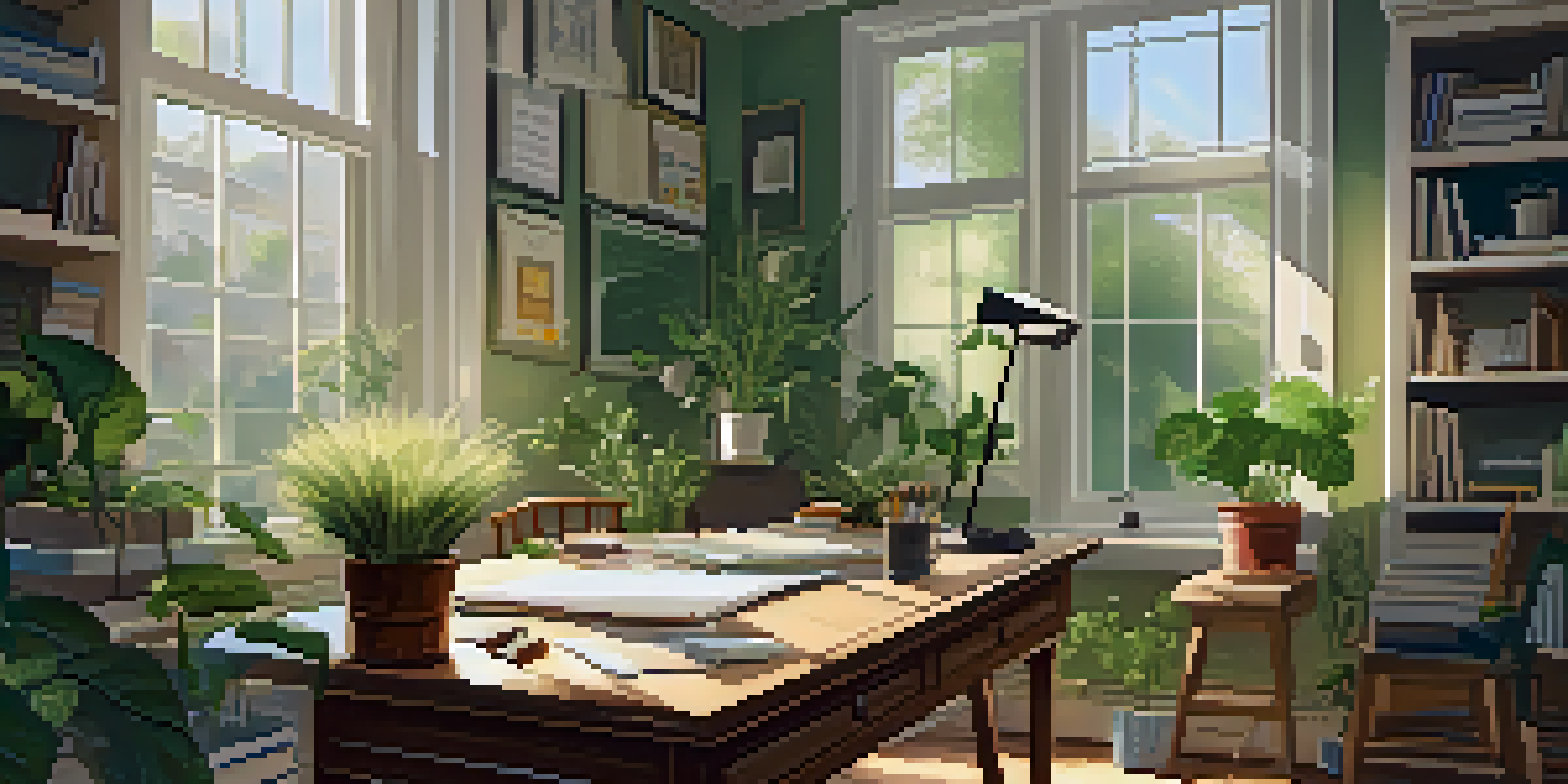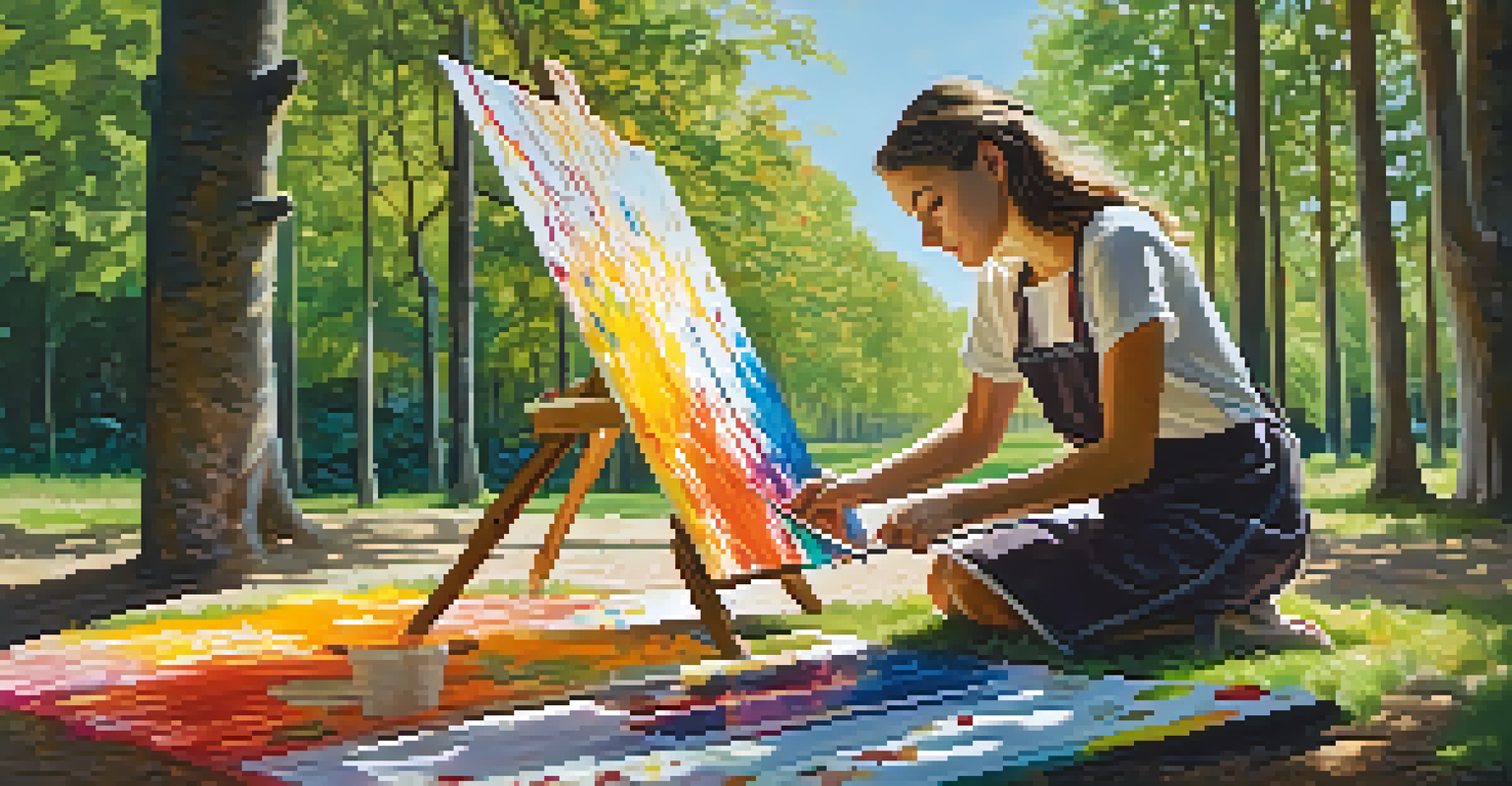The Role of Creativity in Self-Directed Learning

Understanding Self-Directed Learning and Its Benefits
Self-directed learning is a process where individuals take the initiative in their own education. This approach allows learners to identify their goals, find resources, and evaluate their progress independently. It's like being your own captain on a ship, navigating through the vast ocean of knowledge without a strict map.
Education is not the filling of a pail, but the lighting of a fire.
One of the significant benefits of self-directed learning is the ability to tailor your education to fit your unique needs and interests. This personalized approach can lead to greater engagement and motivation, making the learning experience more enjoyable. It’s similar to choosing your own adventure in a book, where every choice shapes the story and journey.
Moreover, self-directed learning fosters critical thinking and problem-solving skills, essential in today's fast-paced world. By taking charge of their learning, individuals become more adaptable and resourceful, skills that are invaluable in both personal and professional settings.
Creativity: The Catalyst for Engaging Learning Experiences
Creativity is at the heart of self-directed learning, acting as a catalyst that transforms mundane tasks into exciting challenges. When learners incorporate creativity, they find innovative ways to explore topics, leading to deeper understanding and retention. It’s like adding a splash of color to a black-and-white painting, making the experience vibrant and memorable.

Engaging in creative processes allows learners to experiment with different methods, whether it's through art, writing, or hands-on projects. This exploration not only makes learning fun but also helps in developing a unique perspective on the subject matter. Imagine solving a math problem by creating a story around it; this imaginative approach can make all the difference.
Self-Directed Learning Empowers Growth
Taking initiative in one's education fosters personalized learning, enhancing engagement and motivation.
Additionally, creativity nurtures a sense of ownership over the learning process, empowering individuals to express themselves freely. When learners feel free to innovate, they're more likely to take risks and pursue their interests, leading to a richer educational experience.
Fostering a Creative Mindset in Learning Environments
Creating an environment that encourages creativity is crucial for effective self-directed learning. This can be achieved by promoting open-ended questions and allowing for exploration without strict guidelines. Think of a garden where ideas can grow wild; the more space and freedom given, the more vibrant the flowers of thought.
Creativity is intelligence having fun.
Educators and mentors play a vital role in nurturing this creative mindset by providing support and resources. They can offer tools for brainstorming or techniques for mind mapping, which help learners visualize their ideas. Just like a gardener provides water and sunlight, guidance can help ideas blossom.
Moreover, collaboration with peers can further enhance creativity. Sharing diverse perspectives often sparks new ideas and approaches, much like how a group of musicians can create a beautiful symphony by blending different sounds and styles.
The Role of Technology in Enhancing Creative Learning
In today's digital age, technology serves as a powerful ally in fostering creativity within self-directed learning. Tools such as online courses, interactive simulations, and educational apps provide endless opportunities for exploration. It's akin to having a treasure chest filled with resources, where each click reveals new gems of knowledge.
Moreover, technology allows for easy access to a wealth of information and diverse learning materials, empowering learners to choose their paths. This flexibility can lead to unique projects and presentations that showcase individual creativity. Imagine creating a video documentary as a project instead of writing a traditional paper; the possibilities are endless.
Creativity Enhances Learning Experiences
Incorporating creativity into learning transforms challenges into exciting opportunities for deeper understanding.
However, it's essential to balance technology use with traditional learning methods. Combining digital resources with hands-on experiences can create a well-rounded approach, ensuring that creativity thrives in all its forms.
Overcoming Creative Blocks in Self-Directed Learning
Even the most creative individuals can face blocks that hinder their learning journey. These barriers may stem from self-doubt, fear of failure, or perfectionism, which can stifle innovative thinking. Recognizing these obstacles is the first step in overcoming them, much like spotting a roadblock on a well-traveled path.
To combat creative blocks, learners can adopt various strategies such as mindfulness, journaling, or engaging in playful activities. These techniques can help clear mental fog and inspire fresh ideas. Picture a cloud clearing to reveal a bright blue sky; sometimes, all it takes is a little mental shift to find clarity.
Additionally, setting achievable goals and celebrating small victories can boost confidence and encourage further exploration. By creating a positive feedback loop, learners are more likely to embrace their creativity and continue pushing boundaries.
Real-Life Examples of Creativity in Self-Directed Learning
There are countless stories of individuals who have utilized creativity to enhance their self-directed learning journey. For example, a young artist may choose to study art history by recreating famous paintings, blending creativity with research. This hands-on approach not only deepens understanding but also allows for personal expression.
Another example is a tech enthusiast who learns programming by developing their own video game. In this scenario, creativity drives the learning process, making coding concepts more relatable and enjoyable. It’s a perfect illustration of how passion combined with creativity can lead to mastery.
Technology Supports Creative Exploration
Digital tools provide diverse resources that empower learners to explore creatively and showcase their unique projects.
These examples highlight the transformative power of creativity in learning. They remind us that learning can be a dynamic and personal adventure, where each individual's approach is as unique as their fingerprint.
Embracing Creativity for Lifelong Learning
Embracing creativity in self-directed learning sets the stage for a lifelong love of learning. When individuals recognize the joy that creativity brings, they are more likely to continue seeking knowledge and experiences throughout their lives. It's like planting seeds of curiosity that can grow into a lush garden of exploration.
Lifelong learners often find that their creative skills enhance their adaptability in various situations, both personally and professionally. This adaptability is crucial in a world that is constantly evolving, much like a chameleon that changes its colors to thrive in different environments.

Ultimately, fostering creativity in self-directed learning not only enriches the educational experience but also prepares individuals for a future where innovation and adaptability are key. By viewing learning as a creative journey, we open doors to endless possibilities and new horizons.